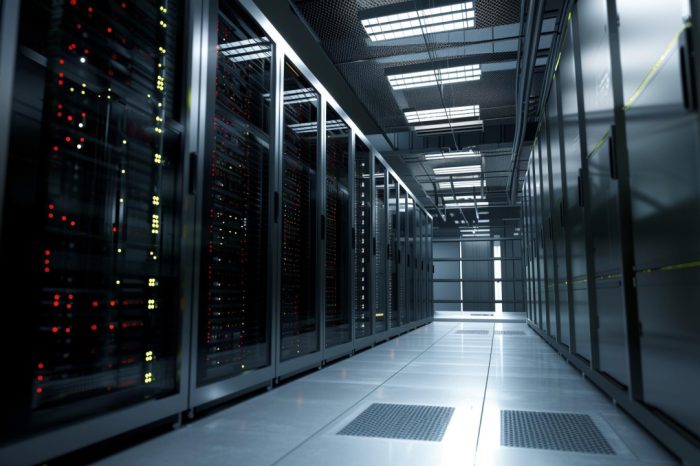Considerations such as power costs, servers crashing, and security need to be considered when making the decision where to store your servers.
Data and the flow of information inside the corporate structure are crucial to any business today. Yet computing itself has become a commodity. So how does a fast-growing enterprise balance its critical data needs against the expense and demands of server computing?
That’s where offsite data centers, or co-location facilities, come in. Small and medium-sized businesses are planning to purchase an average of 3.6 new servers each in 2006, according to a small and medium-sized business survey by Forrester Research, the Cambridge, Mass. research firm. The survey found that 48 percent of small businesses planned to increase spending on servers this year. But rather than creating their own mini server farms, many companies instead are opting to rent rack space offsite, inside buildings designed exclusively to house thousands of servers hooked up to the Internet.
The advantages are numerous. “Co-lo” centers offer extremely high-bandwidth Internet connections, redundant power and cooling systems, back-up generators and 24-hour security.
Get over the offsite paranoia
But, as with any rental in a large complex, tenants worry about the neighbors. How many competitors walk past the cage loaded with your mission-critical equipment on the way to service their own?
“The attraction to keeping your servers on-site is complete control,” says Miles Kelly, vice president of marketing and strategy for 365 Main Inc., a San Francisco-based data center supplier. “Some companies are just too paranoid to go offsite.”
But many are getting over that paranoia — and fast. When 365 Main opened their 227,000-square-foot center in San Francisco in 2004, it had one customer and one equipment rack. By the summer of 2006, when the company’s 350-plus customers had filled the flagship center, 365 Main opened a 315,000-square-foot facility in Chandler, Ariz. Nearly two-thirds of its rentable space filled within weeks of opening.
Both regional and national competitors, like Equinix and Digital Realty Trust Inc., are seeing similar demand.
While some data center facilities provide maintenance and support services to hosted servers, many “co-lo” providers focus on what they call “environmentals” — power, cooling, security and broadband connections — leaving care of the hardware to the tenant owners.
These environmental factors are the key arguments in favor of moving servers off site.
The hidden costs of onsite servers
Power supply often triggers the move. As a business adds servers to its local facility, managers quickly see their power bills skyrocket and, worse, that the regional utility simply cannot supply any more energy to the building. The power problem is compounded by the fact that a typical high-end server in 2006 consumes four times the power of a high-end server from 2003. Offsite data centers offer what they call a mega-plug – twice the power capacity that’s actually required to run the facility at full capacity.
Cooling, or the lack of it, can also trigger the move. Even an hour or two without air-conditioning can cause high-end servers to crash, and companies are loathe to purchase the redundant systems needed to guarantee the machines keep their cool.
Security requirements built into the Sarbanes-Oxley Act of 2002, a federal law that required companies to practice better account for internal control processes, also drive servers offsite. Under that law, public companies must ensure that customer data is protected at all times. Rather than hire a night shift to guard the machines, smaller companies prefer to send servers offsite.
Internet connectivity, particularly for companies that rely on a strong Web presence, also can be a deciding factor. Shared data centers offer top-quality fiber-optic links and volume deals from a variety of connectivity providers.
Expect to pay $600 to $1,000 per month per rack at most self-service co-location centers. Some companies prefer to break down cost into monthly charges per square foot, which range from $18 to $30.










